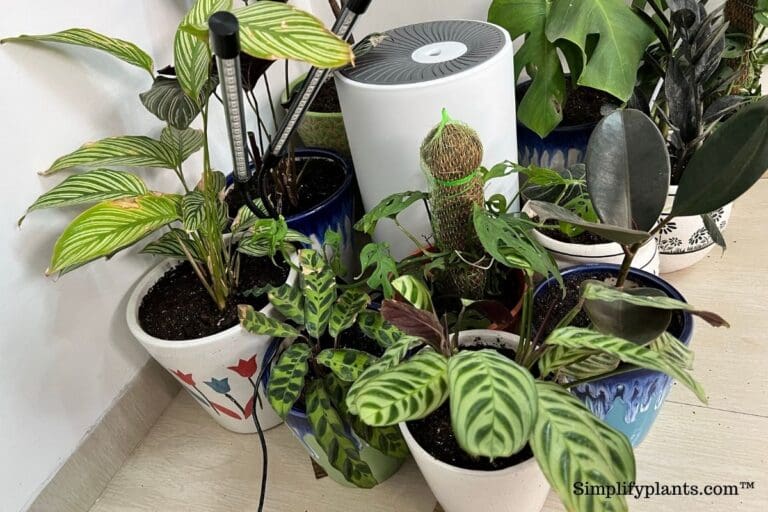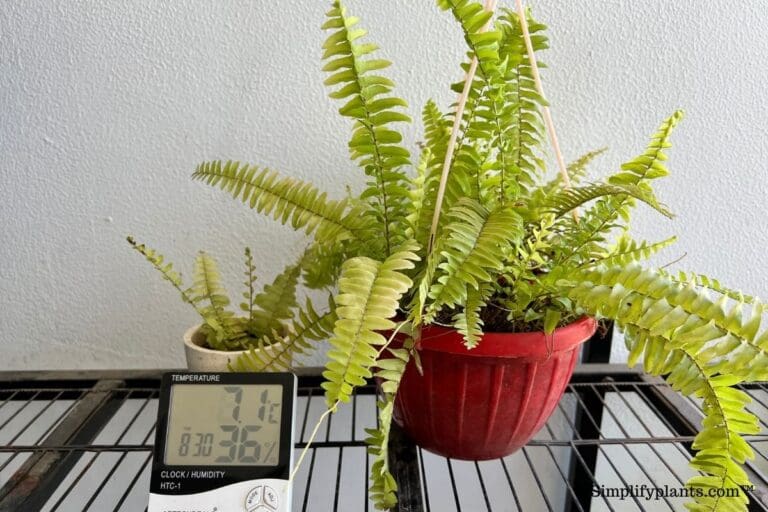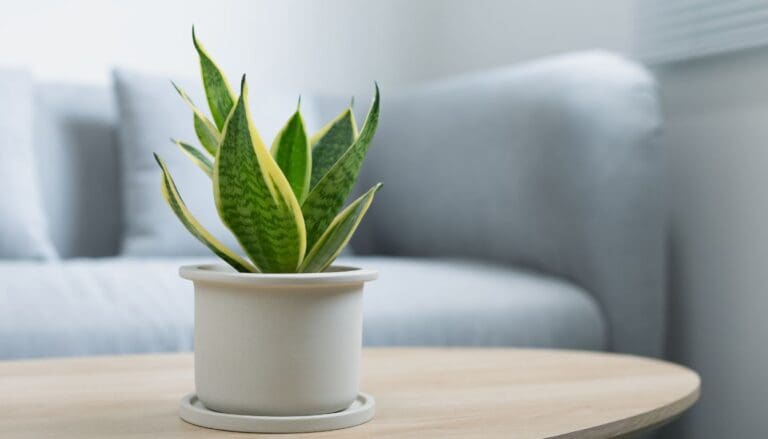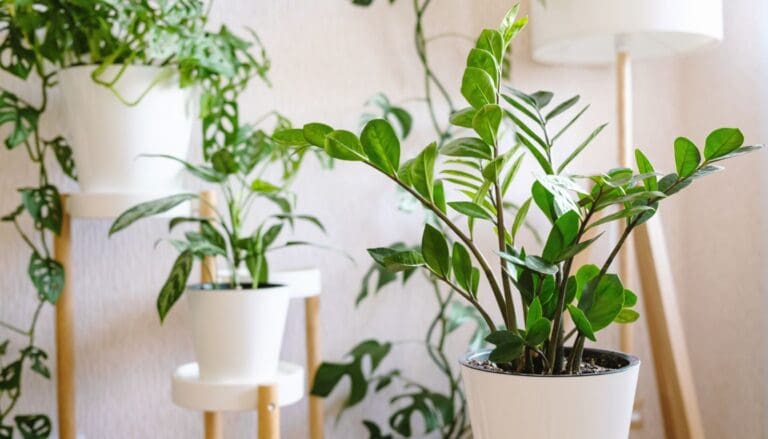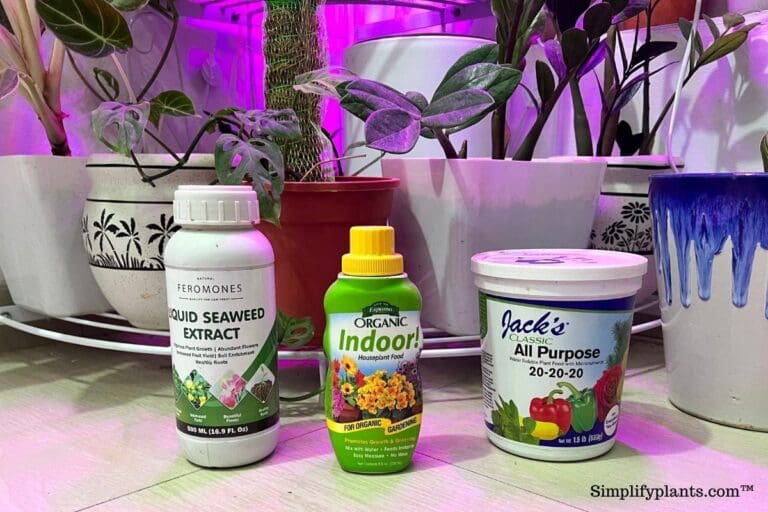7 Things to Do If You’re Losing Plants This Winter
Honestly, it’s tough watching plants struggle as soon as winter hits. Dry air, less sunlight, and those sneaky cold drafts make it a real challenge to keep anything green alive.
Here are some steps I’ve picked up that make it way easier to keep plants alive when the weather turns nasty.
I’ve realized that even tiny tweaks in my plant care routine go a long way. Sometimes it’s just about where I put them or how often I water.
By paying attention to what my plants need in winter, I can usually keep them looking pretty good until spring rolls around.
Please note: Simplify Plants is reader-supported. As an Amazon Associate, I earn from qualifying purchases made by our readers with no extra cost added to you all! Some links in the post are affiliate links and I get a commission from purchases made through links in the post.
1) Move plants away from cold drafts

First thing I do when it gets chilly? I check where my plants are hanging out. Cold drafts from windows, doors, or vents can seriously stress plants—you might even see leaves start to drop.
Even the tougher plants aren’t immune if they’re right in the line of cold air. I usually scoot my plants a few feet away from drafty areas.
Just moving them a little can make a big difference in keeping them healthy. I look for spots that don’t fluctuate so much in temperature.
Sometimes I’ll put plants on a shelf or table instead of the floor. Cold air sinks, after all, and keeping them raised seems to help.
Roots really don’t like sitting on cold surfaces—it stresses them out. I also keep an eye on heating vents.
Warm air blowing right on plants dries them out fast, so I nudge them to the side if they’re too close. These quick fixes only take a few minutes, but they really do help.
Consistent temperature is honestly one of the best things you can do for indoor plants.
2) Increase indoor humidity with a humidifier
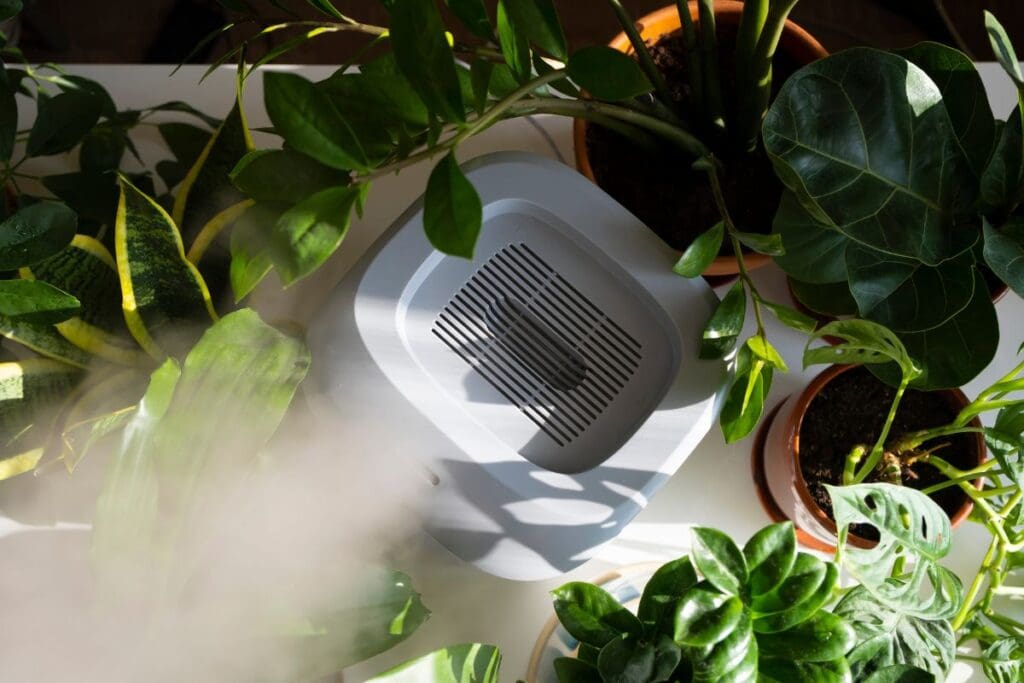
Every winter, I notice my plants looking a little sad because the air gets so dry once the heat kicks on. Brown tips, curling leaves, or early leaf drop are all pretty common.
A humidifier is my go-to for adding moisture back into the air. It really helps my plants breathe easier and look less crispy.
I set the humidifier near my plants—close, but not right up against them. Too much moisture on the leaves isn’t great either (hello, mold).
I use a little humidity meter to check the air. I aim for 40–60%, which seems to keep most of my plants happy.
Usually, I run the humidifier during the day when the heater’s on. It keeps the air from getting desert-level dry.
After adding this step, I see fewer brown tips and the leaves look a lot healthier.
3) Use grow lights for extra light
Shorter days are rough on my plants. Less sunlight means weaker growth and sometimes yellow leaves. That’s when I reach for grow lights.
Grow lights give my plants the boost they’re missing. I set them a few inches above the leaves so the light actually reaches the whole plant.
This keeps them growing even when it’s gloomy outside. I usually leave the lights on for about 10–12 hours—any more and it seems to stress them out.
A timer is a lifesaver here. Different bulbs work differently, but I like full-spectrum LED lights since they don’t use much energy and don’t get too hot.
I set up my lights where the plants already are, like by a window or on a shelf. That way, they get a mix of sun and artificial light.
It really helps keep them from dropping leaves or getting leggy.
4) Water less frequently to avoid root rot

I always remind myself: plants just don’t drink as much in winter. With shorter days and cooler rooms, they slow down. If I water too often, the soil stays soggy and roots start to rot.
I check the soil before watering by sticking my finger about an inch in. If it’s dry, I water. If not, I wait a bit longer.
Good drainage matters just as much as watering less. I make sure my pots have holes so extra water can drain.
I also use smaller amounts of water each time. Instead of flooding the pot, I pour slowly until a bit drains out.
This way, the roots get what they need without sitting in a swamp.
5) Prune dead or yellowing leaves
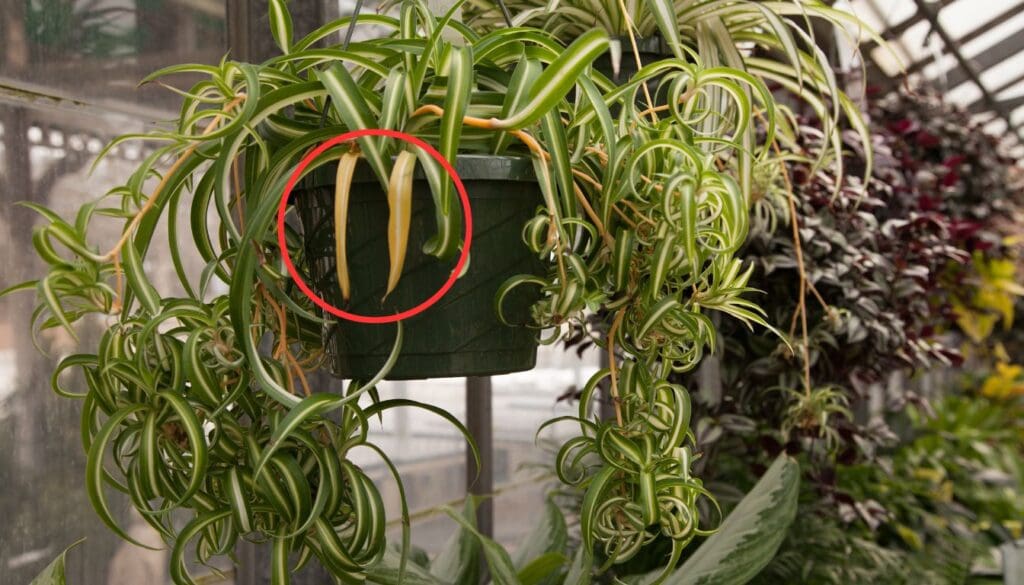
Whenever I spot dead or yellowing leaves, I snip them off. They’re not helping the plant and just sap energy from the healthy parts.
After pruning, the plant looks tidier and there’s more space for new growth. Air moves better, too, which seems to keep pests and mold away.
I always use clean, sharp scissors so I don’t hurt the stems. If a leaf is only partly yellow, I just trim that section instead of chopping the whole thing off.
I try not to get carried away though—removing too many leaves at once can be a shock. I stick to cutting just what’s clearly dead or weak.
It’s a quick job, but it really helps my plants focus their energy where it counts.
6) Repot plants with fresh soil
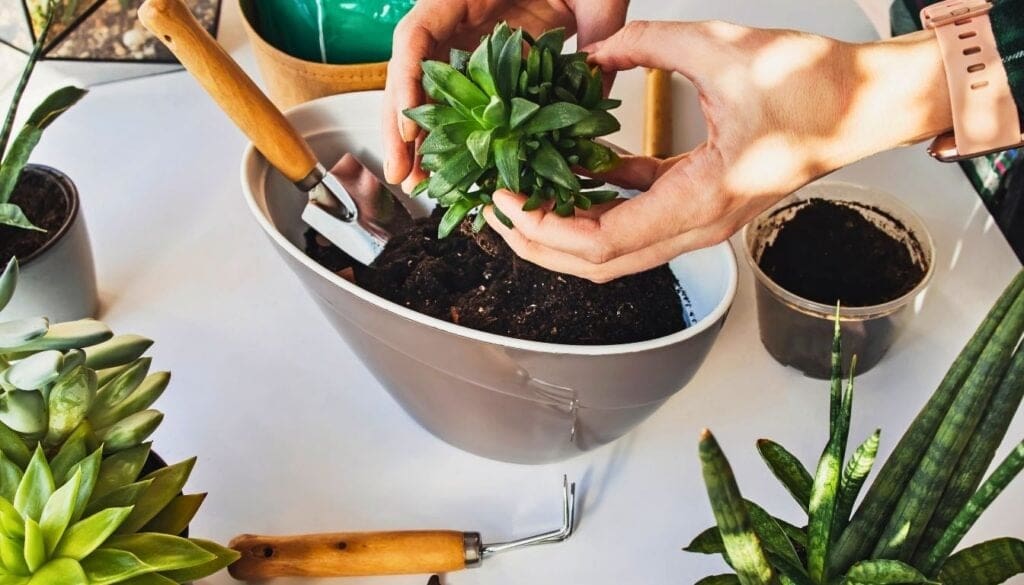
When my plants look tired in winter, I sometimes repot them. Old soil can get compacted or lose nutrients, and that’s not great for roots. Fresh soil can really perk them up.
I pick a slightly bigger pot with drainage holes so excess water doesn’t stick around.
I gently pull the plant out, shake off the old soil, and set it in the new pot with fresh mix.
I water just enough to settle things, not so much that it’s swimming. After that, I keep the plant somewhere with steady light and warmth to help it bounce back.
Repotting takes a little effort, but my plants always seem happier with fresh soil.
7) Keep plants away from heaters
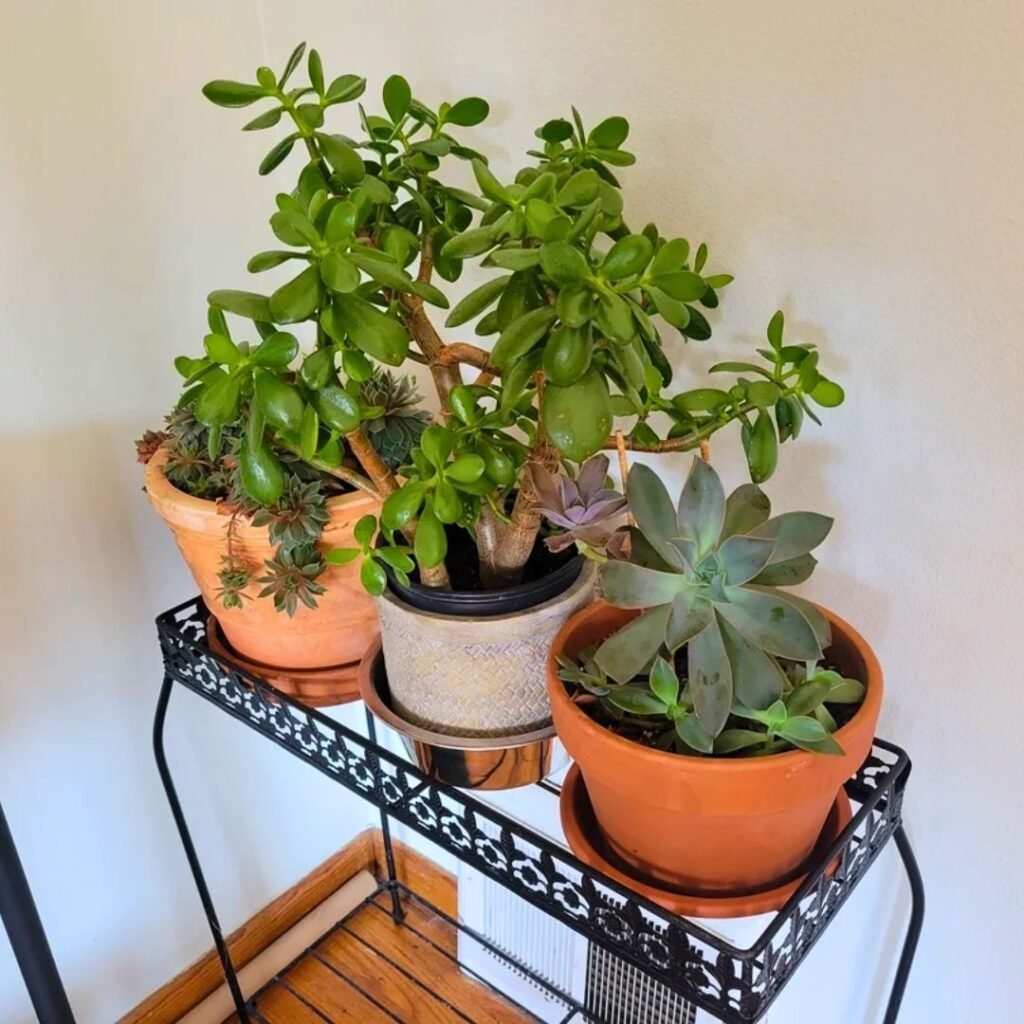
I learned the hard way—heaters, radiators, and heat vents are not friends to plants. The air gets way too hot and dry, and the leaves start crisping up.
Once, I put a plant too close to the heater and the leaves browned at the edges. Direct heat just drains the soil and damages leaves.
Now, I keep my plants at least a few feet from any heat source. It helps them hold onto moisture and keeps the temperature more stable.
If I do have a plant near a heater, I notice it dries out faster and needs water more often. Not ideal.
So I move them to cooler spots and sometimes add a tray of water or a small humidifier nearby to keep the air from getting too dry.
Giving them a break from heaters really helps them stay green all winter.
Understanding Winter Plant Stress
Winter is when my plants seem to struggle most. The combo of colder temps and less light really does a number on them.
The main issues? Water, light, and cold exposure—those are the big ones that mess with how plants grow and survive.
Common Causes of Winter Decline
Usually, I see plants decline because of low light, dry air, or overwatering. Shorter days mean less energy, so plants slow down and don’t need as much water.
If I keep watering like it’s still summer, roots can rot. Indoor heating dries out the air, and leaves lose moisture faster, which leads to brown tips and leaf drop.
I try to fix this by grouping plants together or running a small humidifier. Sudden temperature changes are another headache—drafts from doors or windows can really mess things up.
Even a warm room with a cold draft can do damage. I keep plants away from vents and exterior doors as much as I can.
Here’s a quick list of common stress factors:
- Low light → weak growth
- Dry air → leaf damage
- Overwatering → root rot
- Temperature swings → stress and leaf drop
How Cold Affects Indoor and Outdoor Plants
Cold slows everything down for plants. Outdoors, freezing temps can damage roots, stems, and leaves. If the soil freezes solid, roots can’t take up water and the plant dries out.
Indoors, the problem’s a bit different. The plants don’t freeze, but drafts and cold windowsills can still cause trouble. I’ve seen leaves turn yellow or drop when they’re too close to cold glass.
Hardy outdoor plants do better, but even they can have issues if left out too long. Mulching helps insulate the soil and protect roots.
For potted plants, I try to move them closer to the house or just bring them inside if I can. Indoors, I keep plants a few inches away from windows in winter—just that little bit of space helps keep them safer from cold air.
Creating a Supportive Winter Environment
I try to keep things comfortable for my plants—enough light, steady warmth, and a bit of extra humidity.
Even small changes make a big difference in whether they survive the winter.
Adjusting Light and Temperature
Shorter days are tough, so I move my plants closer to south-facing windows for the most natural light. If that’s not cutting it, I’ll use a grow light for a few hours.
It keeps them from getting leggy or pale. Temperature is just as important. I keep plants away from drafts and heating vents, since sudden changes stress them out.
I aim for 60–75°F—that seems to work for most houseplants. Grouping plants with similar needs together helps too.
It makes it easier to control their environment and I don’t have to move them around as much. With these steps, I can usually keep them steady, even when it’s freezing outside.
Improving Humidity for Healthier Plants
Indoor air gets pretty dry in winter, and honestly, I notice it right away when my plants’ leaves start browning at the edges. To help with this, I like to keep a humidifier running near my plants.
It keeps the air at about 40–50% humidity, which really helps them hold moisture.
If I don’t have a humidifier handy, I’ll just set a tray of water with pebbles under the pots. As the water evaporates, it slowly raises humidity right around the plants.
Sometimes, I’ll mist a few of them too, but only the ones that can handle it—ferns, for example, seem to love it.
Grouping plants together is another trick I use. It creates a little pocket of higher humidity, almost like a mini jungle.
All these steps seem to keep leaves healthier and help my plants stress less during those dry winter months.
Frequently Asked Questions
I try to keep plants away from cold air, make sure they get enough light, and I’m always tweaking how much I water them. I also watch for any leaf changes, rethink fertilizer, and give special care to fussy plants like succulents.
How can I protect my plants from frost damage?
I move my plants away from windows and cold drafts. Sometimes, if it’s really chilly, I’ll cover them with a light cloth at night for extra protection.
What indoor temperature is ideal for houseplants in winter?
Most houseplants seem happy if I keep the room between 65–75°F during the day and just a bit cooler at night. I try not to let things drop below 55°F, though—that’s pushing it.
Are there any specific winter plant care tips for succulents?
For succulents, I make sure they get bright light from a sunny window or a grow light. I cut back on watering since they really don’t need much in the colder months.
What should I do if my plant’s leaves are turning yellow or dropping off?
I’ll prune off dead or yellowing leaves so the plant can focus on new growth. I always double-check for overwatering too, since that’s usually the culprit if leaves are dropping.
Can I still fertilize my plants during the colder months?
I usually hold off on fertilizer in winter because plants slow down a lot. If I do use any, I’ll pick a weak solution and only use it sparingly.
How often should I water my plants in winter to prevent overwatering?
Honestly, I cut back on watering during winter and just check if the top inch of soil feels dry before reaching for the watering can.
That way, I’m not accidentally causing root rot—which, let’s face it, is way too easy when the weather’s cold and the soil isn’t drying out as fast.
Recommended Garden Supplies
| Product Image | Our Recommended Gardening Supplies | Check Offers! |
|---|---|---|
Top Top
Top
Top
Top
Top
Top
Top
Top | rePotme Houseplant and Tropical Classic Potting Soil Mix | Check Offer On Amazon |
 Top
Top
Top
Top
Top
Top
Top
Top | Espoma Organic Indoor Plant Food | Check Offer On Amazon |
 Top
Top
Top
Top
Top
Top
Top
Top | GooingTop LED Grow Light 6000K Full Spectrum Clip Plant Growing Lamp | Check Offer On Amazon |
 Top
Top
Top
Top
Top
Top
Top
Top | Soil Moisture Meter | Check Offer On Amazon |
 Top
Top
Top
Top
Top
Top
Top
Top | Govee Hygrometer Thermometer, Bluetooth Enabled! | Check Offer On Amazon |
 Top
Top | LEVOIT Humidifiers for Large Room(Best For Plants) | Check Offer On Amazon |
 Top
Top
Top
Top
Top
Top
Top
Top | Upgraded DIY Automatic Drip Irrigation Kit, 15 Potted Houseplants Support | Check Offer On Amazon |
 Top
Top
Top
Top
Top
Top
Top
Top | Stainless Steel Heavy Duty Gardening Tool Set | Check Offer On Amazon |
 Top
Top
Top
Top
Top
Top
Top
Top | Bonide Insecticidal Soap | Check Offer On Amazon |
 Top
Top
Top
Top
Top
Top
Top
Top | Bonide 32 oz Spray Neem Oil for Organic Gardening | Check Offer On Amazon |
 Top
Top
Top
Top
Top
Top
Top
Top | Garden Safe Fungicide | Check Offer On Amazon |


